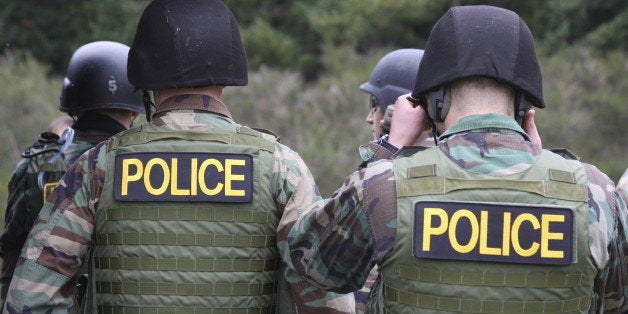
Co-authored by Jossianna Arroyo
Black History Month finds us writing over the corpses of black and brown girls killed by police officers who are enabled by a deeply flawed justice system. The most recent victim is Jessica Hernández, 16, from Denver. Jessica was reportedly behind the wheel of a stolen car, which struck an officer before the officer and his colleague opened fire, killing the girl.
Some might feel Jessica invited this fate by allegedly engaging in illegal activity. But it doesn't matter if it's a teenager in a stolen car or little Aiyana Stanley-Jones, 7, asleep at grandma's house. Ultimately police like Joseph Weekley, the officer who took Aiyana's life during a botched police raid in Detroit in 2010, kill with impunity. Charges against Weekley were dismissed, and he will not be retried. Some have suggested if Aiyana's father had not been a police suspect, this tragedy not would have happened.
That logic is ignorant of the double standard of justice in this country. For example, blacks and Latinos make up only 25 and 28 percent of the population in places like New York City, yet we account for 55 and 34 percent of people detained and searched by police. Black males are 21 times more likely to be shot by police than white men in the same circumstances. In Chicago, a city where whites account 45 percent of the population and Latinos 28 percent, Latinos are twice as likely to be fatally shot by police.
These trends are not limited to cities where historically enslaved and colonized African diaspora groups live, but all across the country unarmed black and brown bodies are met with deadly force. In America's justice system, death sentences for black and brown people--whether innocent or suspected of a crime--are acceptable outcomes while predominantly white officers acting as judges, juries, and literal executioners are somehow beyond reproach.
The evidence of abuse of power is substantial. Also evident are the ways this power actively works to silence dissent. Ramsey Orta, 22, the young man who recorded New York City Officer Daniel Pantaleo choking the life out of Eric Garner, 43, in 2014 is the latest victim. Less than one month after the video surfaced, Orta was arrested on two counts of criminal possession of a weapon. Plainclothes narcotics officers followed Orta and a teenager, saying Orta put something in teen's waistband. After a search, police said they found a gun and a small amount of marijuana on the teen. Though the Staten Island prosecutor failed to get an indictment against Pantaleo despite video, they had no trouble securing one for Orta, who now awaits trial.
Moreover, the excessive punishments themselves tell a grim story about the abuses of power in our justice system. Jessica was shot 18 times, and Aiyana was sleeping when she was killed in front of her family. These do not appear to be the isolated mistakes of an untrained police force as many have argued. Rather, the rising body count points to black and brown bodies becoming sites of social vulnerability where they are considered "predelictive" or dangerous even before a crime happens. As police forces pursue lower crime-statistics, policing has become increasingly reckless and corrupt so that black and brown bodies are read indiscriminately as the problem.
These problems extend beyond police stats: Sociologist Pedro Noguera reveals the statistics for black and Latino students in places like New York City, where biased educational policies effectively feed black and brown girls and boys into the school-to-prison pipeline. Black and Latino children not only appear "older" to their teachers and peers, but also they are treated as such by a system that builds on policies of "subtractive education," which renders students' families, communities, culture, and experiences as unworthy and largely outside of meaningful educational practices. The impact is disastrous, as only 59 percent of black males and 49 percent of Latino males complete high school.
Moreover, what might be described as a teenage prank or psychological issue for white-children is not regarded as such for teenagers like Jessica. Rather, they are criminalized and often end up in adult facilities. For example, black females are incarcerated at a rate nearly three times the rate of their white counterparts and Latinas at a rate 1.6 times the rate of white females. From 2000 to 2009, the rate increased 23.3 percent for Latinas, yet decreased by 30.7 percent for black women. We cannot help but wonder whether the violent deaths of black women are related to that decline.
In view of these difficult realties, we want to use Black History Month as a time to remember all struggles for black and Latino civil rights, so it serves as a moment not only to reflect but also to mobilize by demanding justice for Jessica, Aiyana and Orta and all black and Latino lives.
Co-authored by JOSSIANNA ARROYO' Jossianna Arroyo, professor of Latin American and Caribbean Studies and African Diaspora Studies at the University of Texas at Austin and author of "Writing Secrecy in Caribbean Freemasonry." Follow her on Twitter@JossiannaA.